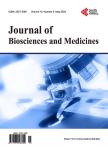Acellular Mineralized Exoskeleton Shrimp (MES): A Natural Source of Bioactive Factors for Tissue Regeneration—Preliminary Results
Acellular Mineralized Exoskeleton Shrimp (MES): A Natural Source of Bioactive Factors for Tissue Regeneration—Preliminary Results作者机构:Faculty of Dental Medicine University of Porto Porto Portugal Private Practice (Raquel Zita Dental Clinic) Porto Portugal i3S—Institute for Research and Innovation in Health University of Porto Porto Portugal INEB—National Institute of Biomedical Engineering Porto Portugal ICBAS—Institute of Biomedical Sciences Abel Salazar University of Porto Porto Portugal School of Medicine University of Minho Braga Portugal Department of Histology Faculty of Dental Medicine University of Oporto Porto Portugal Department of Pharmacology Faculty of Dental Medicine University of Oporto Porto Portugal Department of Biomaterials Faculty of Dental Medicine University of Oporto Porto Portugal Faculty of Engineering University of Oporto Porto Portugal
出 版 物:《Journal of Biosciences and Medicines》 (生物科学与医学(英文))
年 卷 期:2022年第10卷第3期
页 面:34-43页
学科分类:1001[医学-基础医学(可授医学、理学学位)] 10[医学]
主 题:Guided Bone Regeneration Biomaterial Biocompatibility Oral Surgery
摘 要:Current challenges in the development of scaffolds for bone regeneration include the engineering of biomaterials that can withstand a natural dynamic physiology on the bone that provides a matrix capable of supporting cell migration and tissue ingrowth. The objective of the present work was to develop and characterize a new biomembrane—Mineralized Exoskeleton Shrimp (MES) developed from the exoskeleton of paleomonetes. The integration of MES as a biomaterial for tissue regeneration relies on the growing evidence that the shrimp is characterized by a hierarchically arranged chitin fiber structure, mineralized predominately by calcium carbonate and/or calcium phosphate, bringing beneficial effects in bone regeneration. Additionally, the tridimensional MES structure, can act as a “tent for Guided Bone Regeneration (GBR). Recently, our team has characterized the MES biomaterial by in vitro (human osteoblastic cellular cultures and immersion of the membrane in modified synthetic plasma) and in vivo (soft tissue in lab mice and hard tissue in rabbit model). The cellular growth in the MES membrane was very exuberant in cellular culture with osteoblastic colonization on its surface (histophilic and biocompatible). After the immersion in modified synthetic plasma for one week, a mass mineralization occurred throughout the membrane’s surface (bioactive). The analysis of histological samples from experimental surgery in lab mice showed that the MES membrane wasn’t toxic to soft tissues and that it caused a moderate inflammatory response (first reabsorption signs at 8 weeks). The MES could act as a cell-guiding template that contains the necessary cues and adequate three-dimensional set to facilitate cell adhesion and promote tissue regeneration upon implantation and subsequent biodegradation.



